CaCO3 (Calcium Carbonate) Petrified Waterfall
Take a virtual field trip to Hierve el Agua in the state of Oaxaca, Mexico to see the CaCO3 (calcium carbonate) formations.
Up high in the volcanic mountains, waters bubble and flow upwards. Yes, upwards, from deep within the earth to elevations of about 6000 feet or 1800 meters above sea level. Learn about the science of the spectacular CaCO3 (calcium carbonate) features! CaCO3 is also known commonly as limestone.
The View From Below
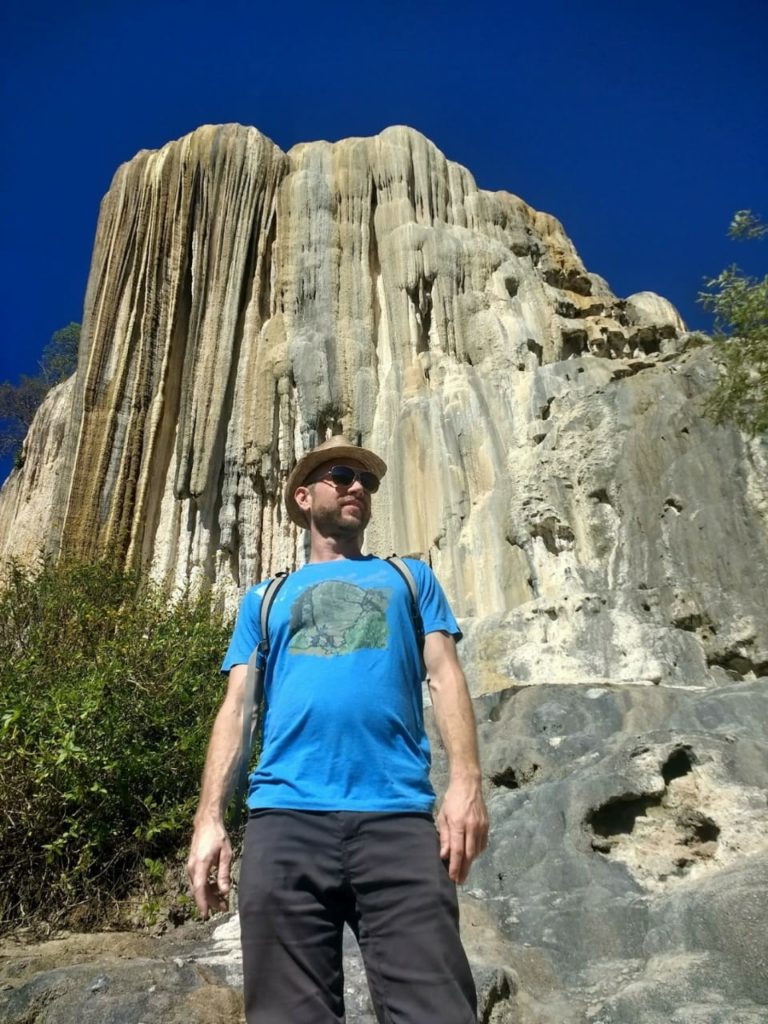
They call it a petrified waterfall.
The name is Hierve el Agua, which means “boil the water” in Spanish.
So what is it? Petrified? Boiling?
Let’s trace the source of this spectacular geological feature, and see where is comes from!
The Bubbling Source Atop the Falls
The source is bubbling away, yet the water is rather cold. So it’s not boiling, despite the name.
The bubbles are carbon dioxide gas. The gas indicates the presence of dissolved carbonate ion in the water.
Slowly, over long periods of time, the carbonate ion in the source water reacts chemically with other dissolved minerals to form solid limestone. Chemically, we say that CaCO3, known as calcium carbonate, has formed.
The Source
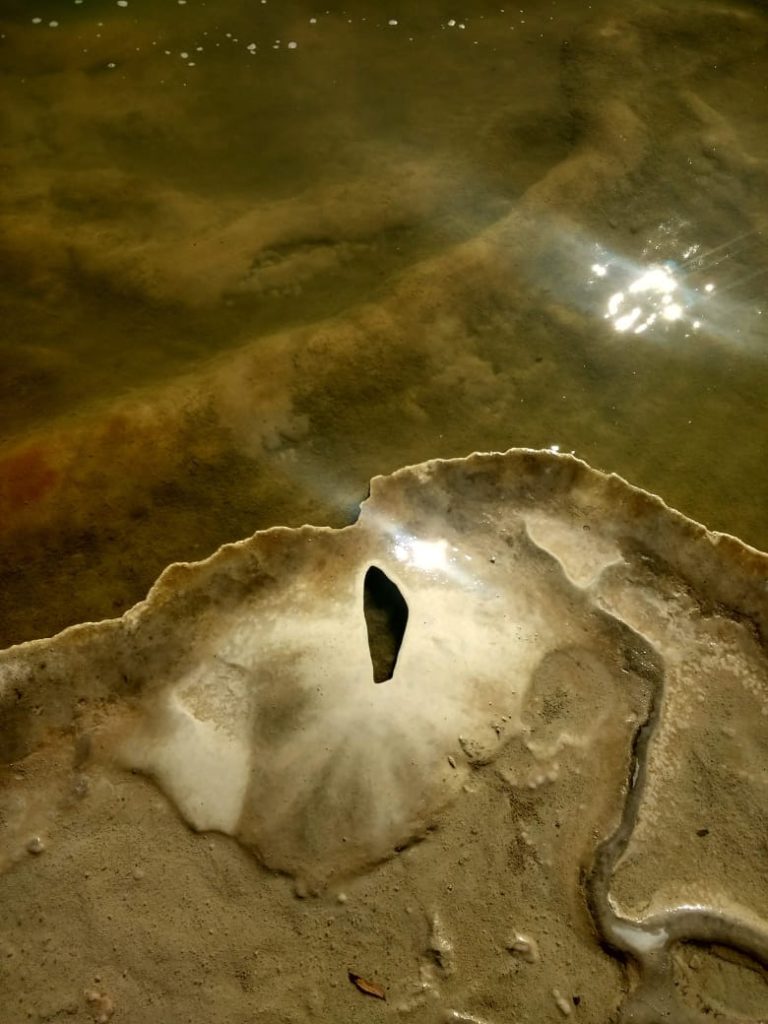
Here is the source atop one of the petrified falls. There are two falls, each with it’s own bubbling source at the top.
The crack near the bottom center of the photo is like a little geyser. It has a slow, nearly constant trickle of water containing both dissolved carbonate and bubbling gas (carbon dioxide).
It is especially white around the crack. This is rather pure calcium carbonate (CaCO3), the main component of limestone.
A Second Bubbling Source
You can really see the source is bubbling away here. Again, the water is rather cold.
This is the source atop the fall you saw across the valley in the previous video above.
Ripples in Time
Ripples in the water are frozen in time, making a series of tiny islands in the pools near the source.
They are NOT soft and muddy. The little features, islands, walls and mounds are solid limestone. Again, these features formed as calcium carbonate (CaCO3) deposited chemically, slowly over some time. It is all very, very solid rock.
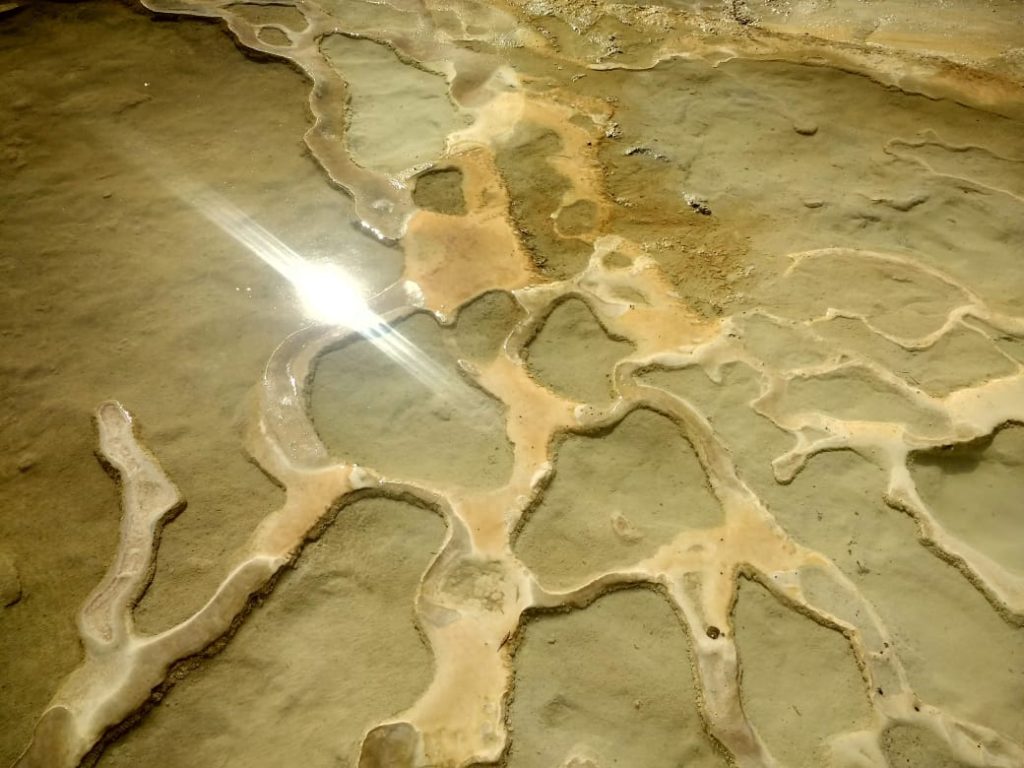
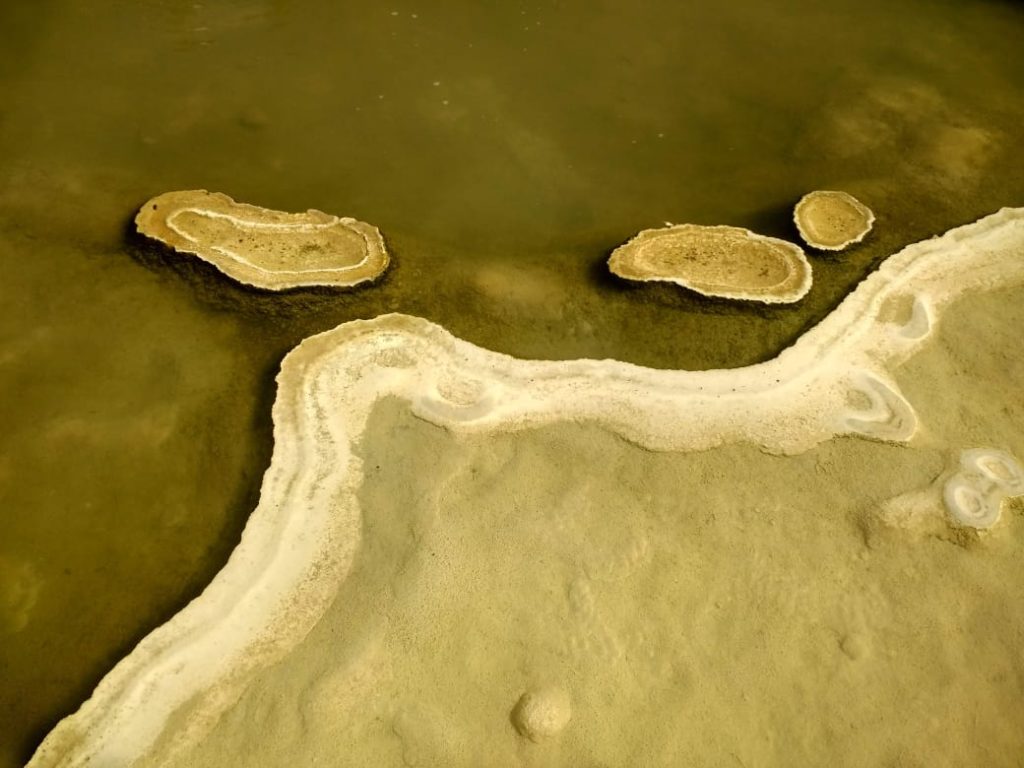
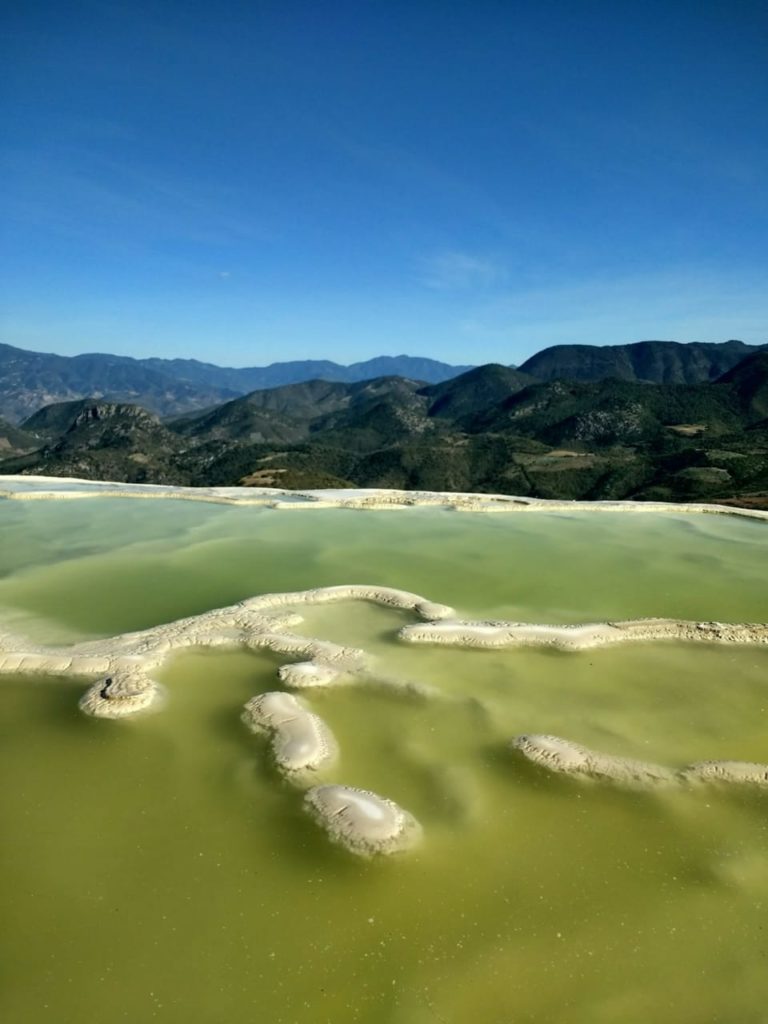

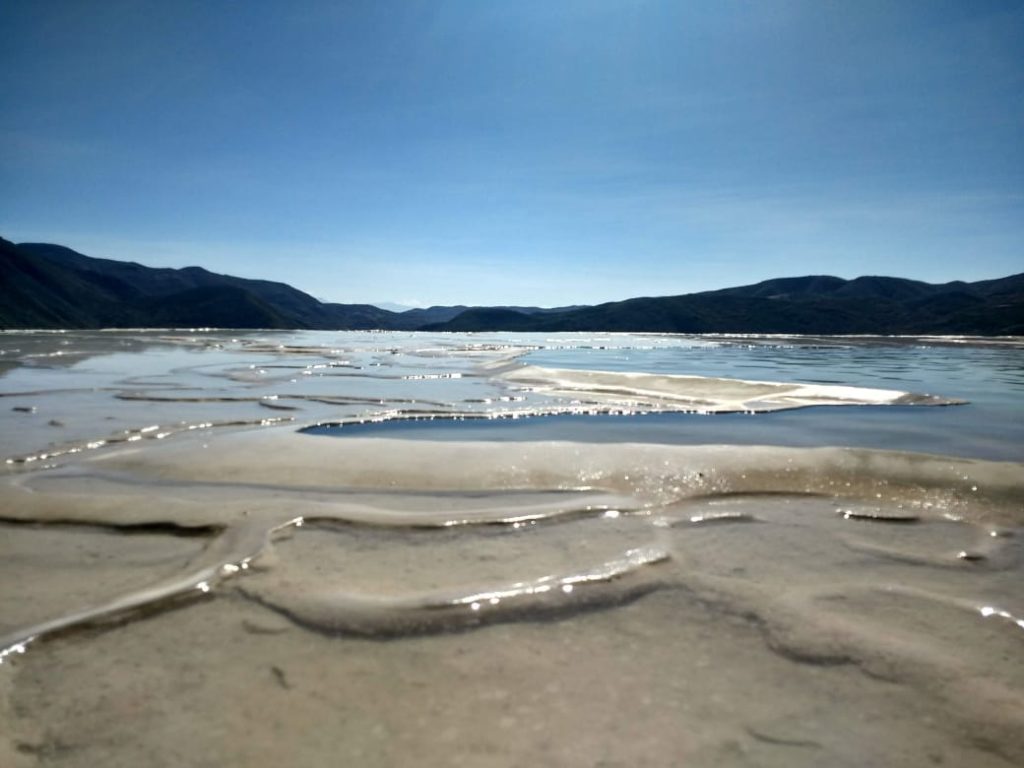
Not The Usual Limestone Formations
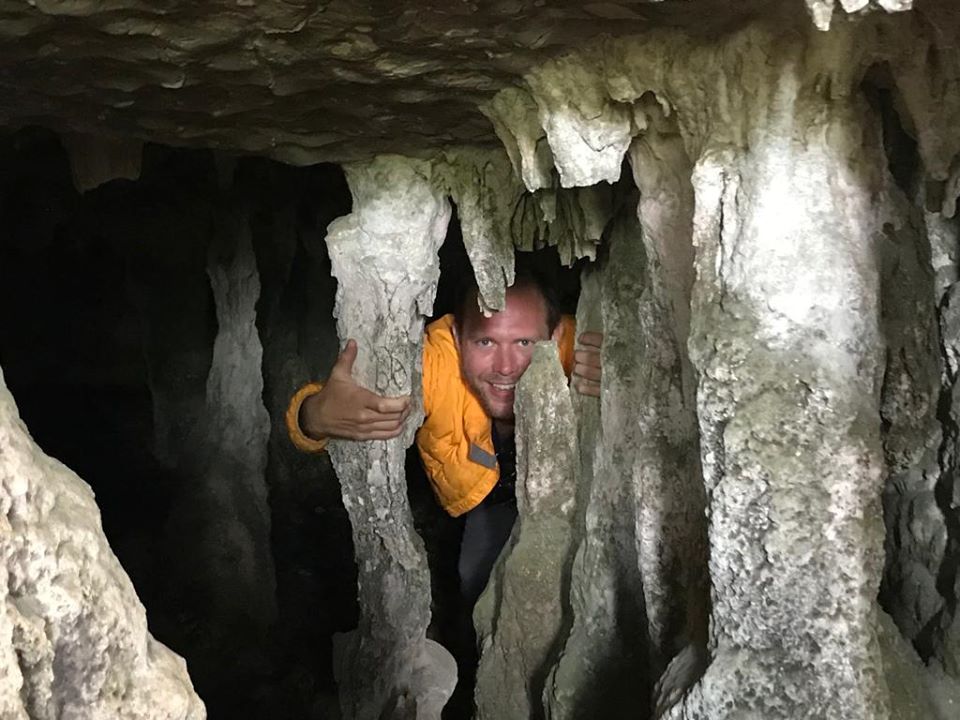
We are more used to seeing limestone formations such as stalactites and stalagmites form inside of caves.
As water containing carbonate ion slowly drips, the limestone formations are deposited from both the top and bottom. Eventually, the stalactites and stalagmites may connect into columns like shown here.
This photo is from an entirely different location in Arcotete in Chiappas, Mexico. Different area but same idea: it’s CaCO3 calcium carbonate slowly deposited over time.
Limestone Deposited in Layers
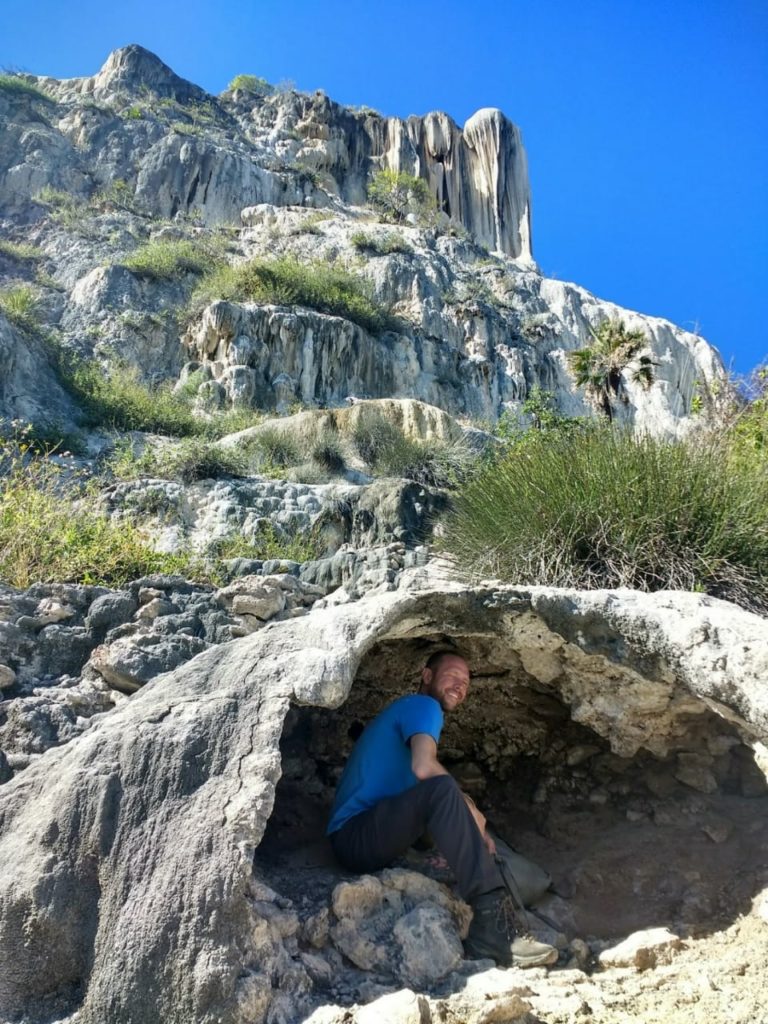
What’s different about Hierve el Agua is that the limestone is deposited in layers at the surface, instead of the usual situation of water dripping through caves.
Here I am way below the base of the petrified fall. I am in a small cave with a deposited limestone roof. Everything is covered in a layer of limestone from the carbonate-containing water flowing downhill.
The earth beneath the limestone was washed away here, leaving the small cave I’m in.
Good thing, because it’s over a hundred degrees here in the sun!
I never knew the chemistry of calcium carbonate (CaCO3) could be so cool… on a hot summer day:)
The View from Afar
There are two major petrified falls, each with its own source atop. These photos were taken across the valley separating the falls and in the valley under the largest fall. These are very, very, very tall columns of limestone. I have never personally seen such large columns form inside of a cave, perhaps because not many caves would have a ceiling this high.
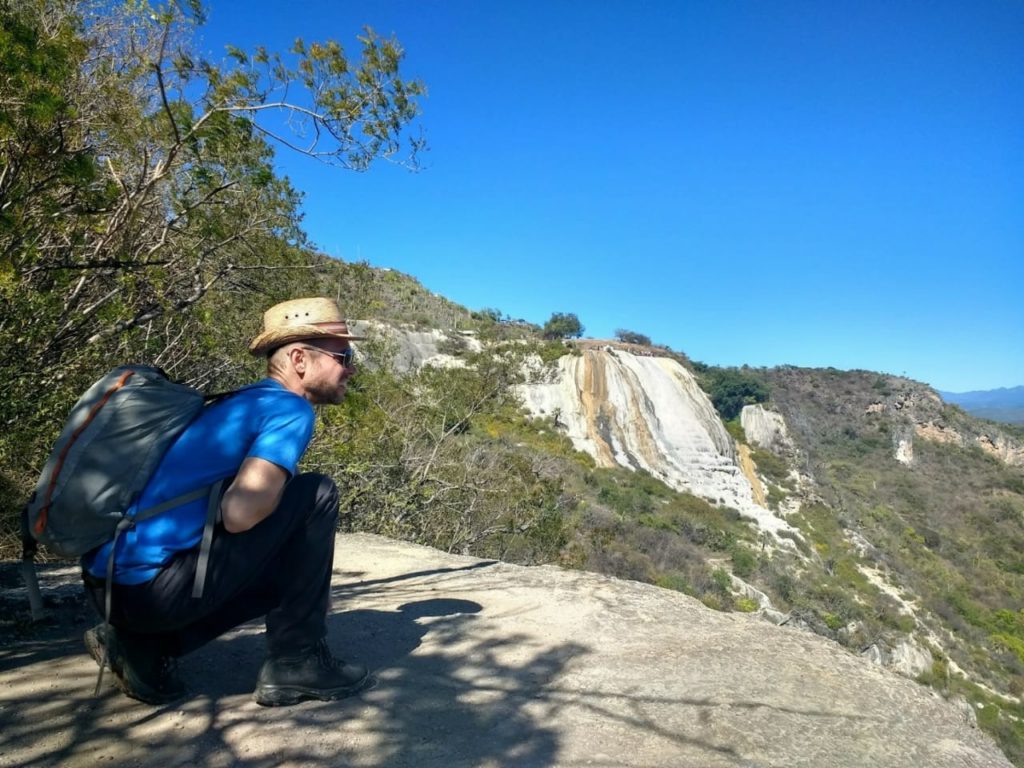
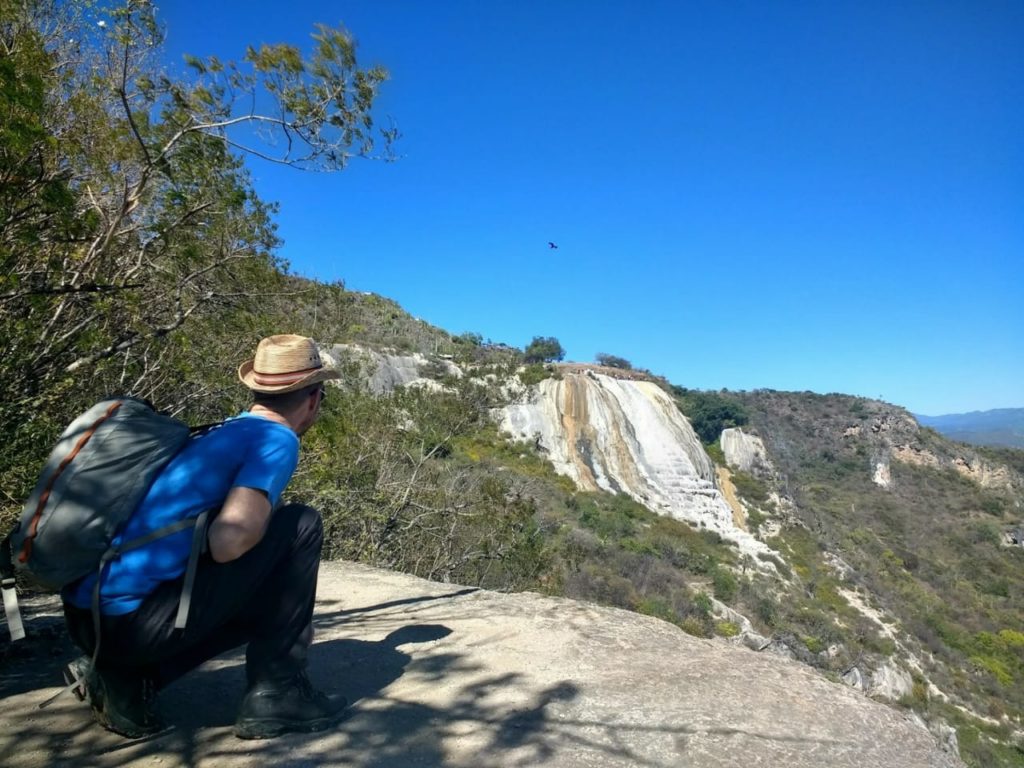

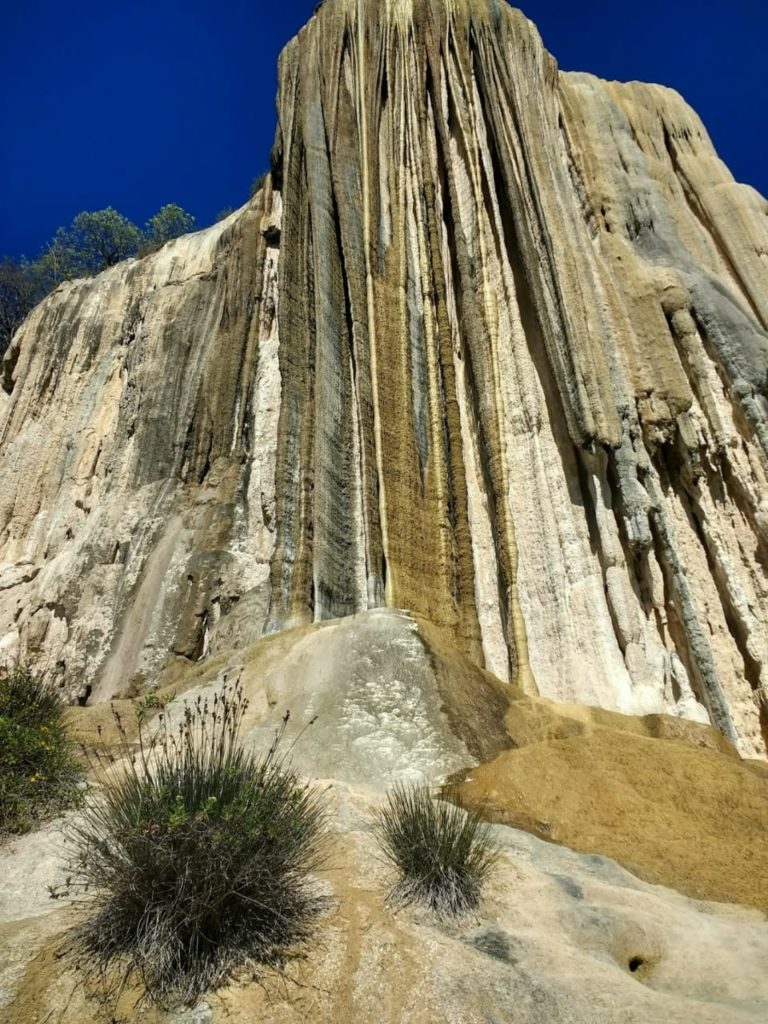
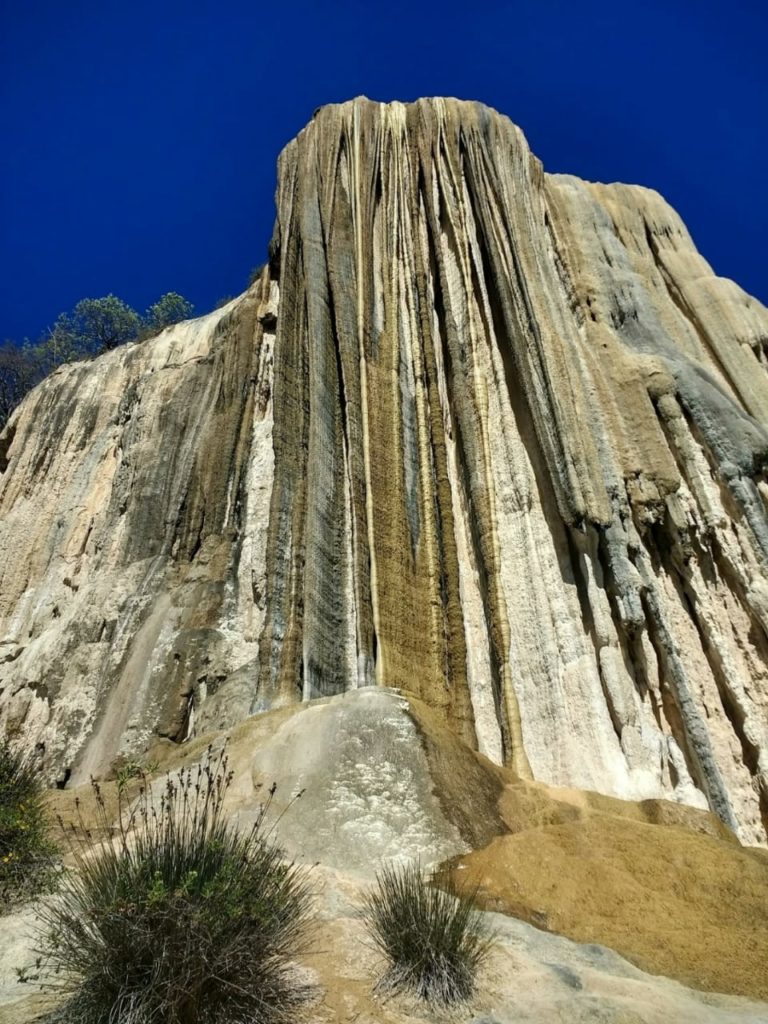
The Science
What we are looking at here is a precipitation reaction.
Watch as I pour and mix two glasses of clear liquids which look like water… actually both glasses contain dissolved minerals and salts.
When the dissolved minerals mix, they form a white solid substance. The water appears cloudy and white, and the solid will eventually settle to the bottom in a solid layer.
This precipitation reaction is very similar to the limestone-forming reactions that occur in nature. It’s just much, much faster. Like decades or centuries faster;)
You can learn about this type of reaction in the course Immersive Introduction to Chemistry.
How It's Used
At the surface, calcium from the waters combines with carbonate from the waters to form the substance calcium carbonate, or CaCO3. When this happens in nature we call it limestone. It’s a natural process that forms much of earth’s rocky crust… and occasionally spectacular formations, too.
While it’s a natural process from a natural source, humans have for centuries trained the CaCO3. By carefully directing the flow of the waters, you can see in the first image below a canal is formed in the deposited limestone itself. The entire site, covering some square miles, is interlaced with such canals, many of which are rather small. It seems the ancient Zapoteca people used the canals to transport the mineral-rich drinking water into the villages below the falls.
In the middle photo, you can see the canal connect into a small lagoon.
In the right photo, the CaCO3 was trained to form over a wall around the swimming area, providing an attractive natural coating to an already tranquil, relaxing, and pristine natural environment.
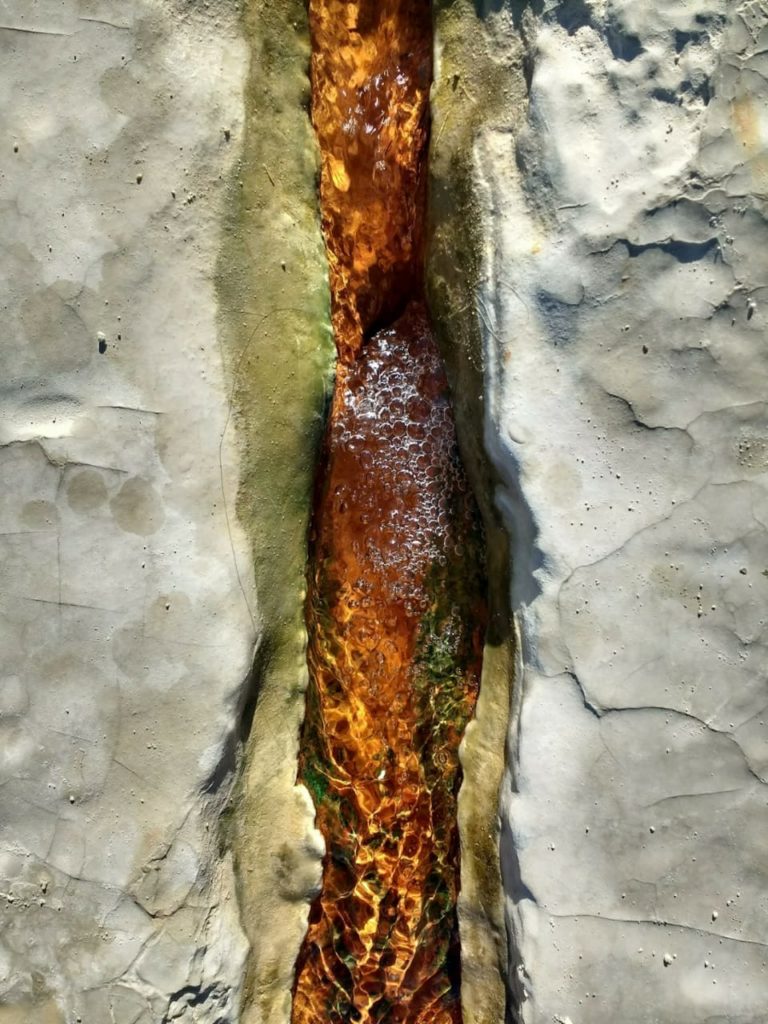
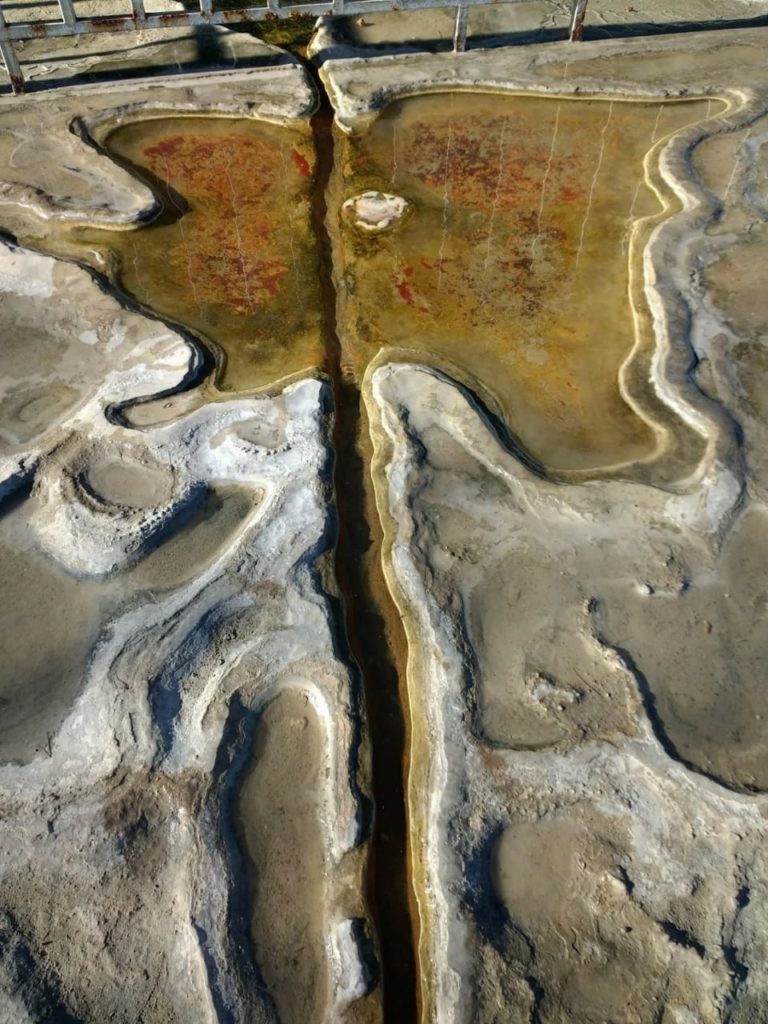
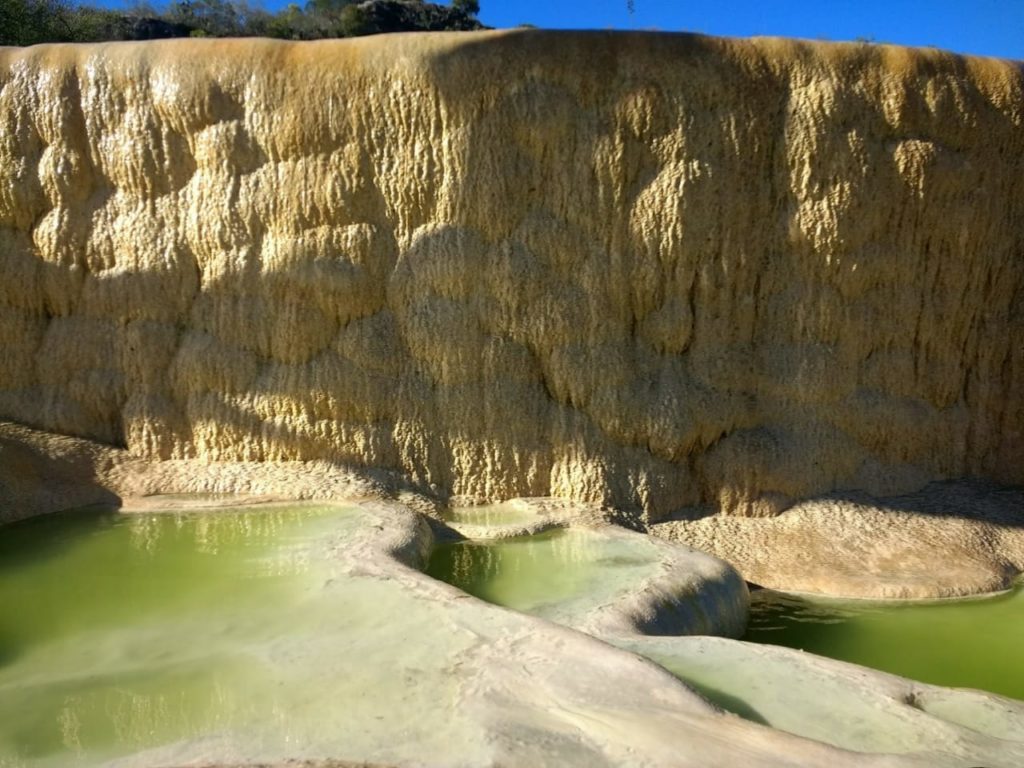
[Splash!]
And then there was swimming. Splash!
Your virtual field trip has ended. Please come again!
Get More Info
Honestly, there is not a whole lot of information out there about the unique geology of Hierve el Agua in Oaxaca, Mexico. All of the pictures and info above were gathered personally by Dr Scott. (He visited the location more than several times once he learned about it.) Hierve el Agua is easily reached from the city of Oaxaca, Mexico, if you happen to travel that way.
You can find some professional photographs as well as information, in Spanish language only, at the following links:
